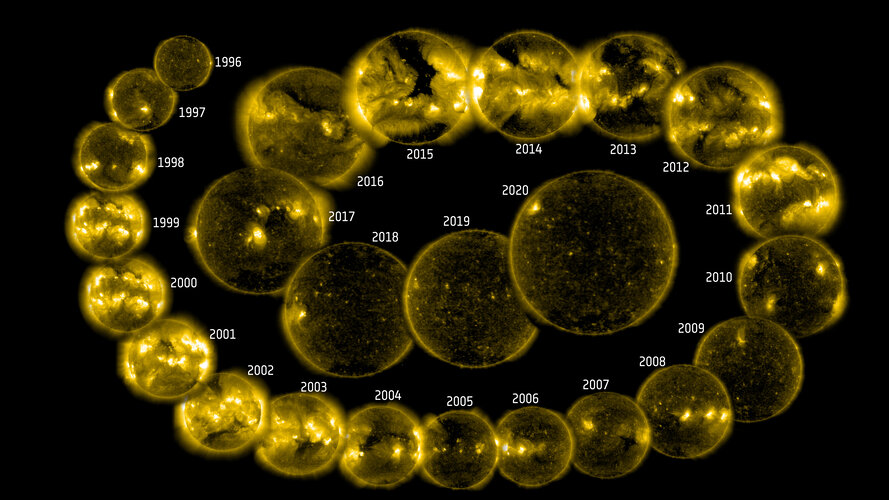What are ESA's eyes on the Sun?
ESA has multiple space missions and instruments studying the Sun, because learning about our star is key to predicting its potentially hazardous activity. This includes missions such as Solar Orbiter, SOHO, Proba-2 and the upcoming Proba-3.
Other missions, including Cluster, Swarm and SMOS, measure the effects of solar activity at Earth and increase our understanding of how our atmosphere and magnetic field work. They will soon be joined by the Smile mission, which will take the first X-ray images and videos of the solar wind slamming into Earth’s protective magnetic bubble, and its complementary ultraviolet images will provide the longest-ever continuous look at the northern lights.
Monitoring current space weather is a core activity of ESA’s Space Weather Office, part of the Agency’s Space Safety programme. Their goal is to continuously observe, monitor, understand and predict all potential hazards emanating from our star. Our growing space weather service network helps monitor and predict space weather for the many different industries and organisations impacted by it.
Space weather services will greatly improve once ESA’s Vigil mission launches in 2031. With its scientific instruments – including ones similar to those on Solar Orbiter – Vigil will monitor the side of the Sun. By spotting areas of solar activity days before they rotate into Earth's view, Vigil will provide early warnings for hazardous solar events.
As we deepen our understanding of solar activity and its impact on Earth, what solar secrets might our spacecraft reveal to us next?



